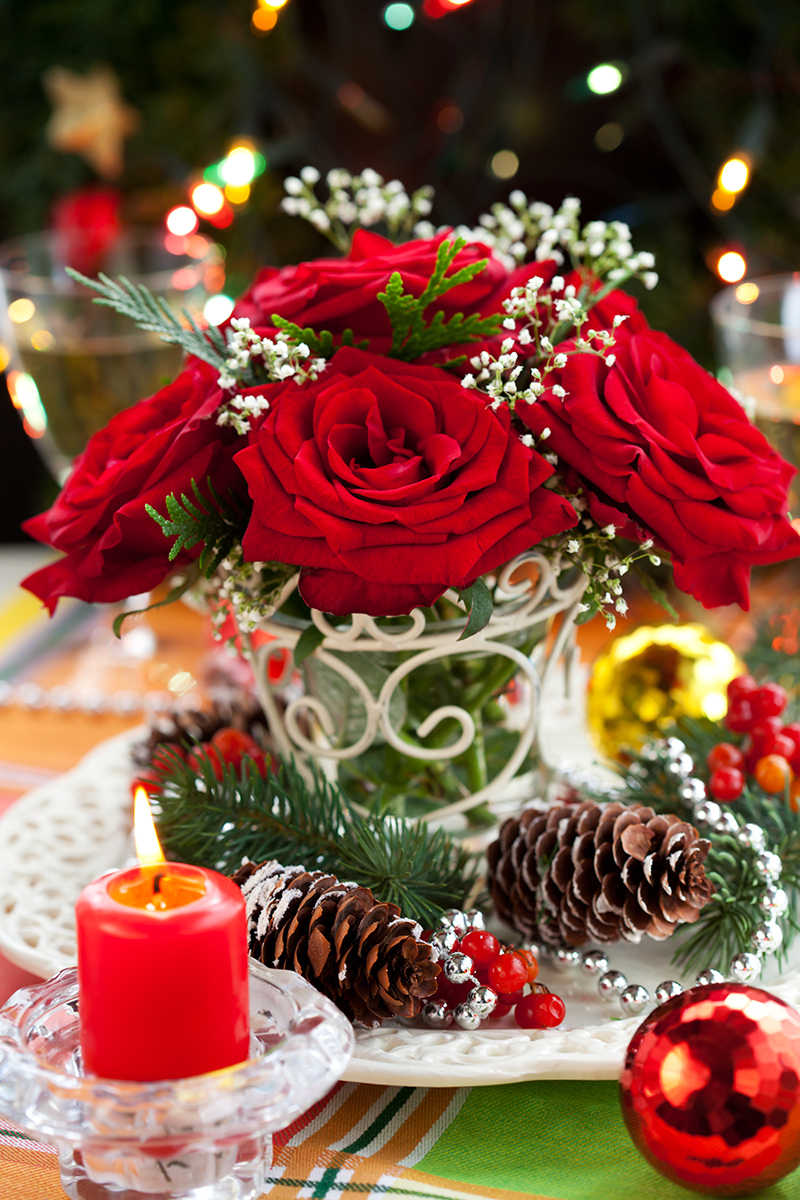3 straightforward approaches for flower preservation
Posted on 21/08/2025
3 Straightforward Approaches for Flower Preservation
Many of us love receiving or collecting beautiful flowers, whether they're from a special occasion, your garden, or a thoughtful gift from a loved one. Unfortunately, fresh flowers don't last long, but preserving them can transform these cherished blooms into lasting mementos. With the right techniques, you can keep your favorite blossoms looking vibrant for years to come. In this article, we'll explore three straightforward approaches for flower preservation that you can easily do at home. From traditional drying methods to modern resin casting, you'll find comprehensive tips and directions to help retain the natural beauty of your favorite flowers.

Why Is Flower Preservation Important?
Preserving flowers captures memories and transforms fleeting blooms into beautiful tokens that last. Whether it's a bouquet from your wedding, a flower from a graduation ceremony, or simply a particularly lovely bloom from your garden, these preserved flowers can be used in home decor, art projects, or as meaningful keepsakes. With the right flower preservation technique, you can protect the color, shape, and sentimental value of your treasured blossoms.
Approach 1: Air Drying Flowers
Air drying is a time-tested, straightforward method of flower preservation. It's simple, inexpensive, and doesn't require specialized equipment. Air-dried flowers maintain a rustic, vintage look, making them ideal for creating charming arrangements that last.
How Air Drying Works
Air drying removes moisture from the petals and stems by exposing flowers to open air in a controlled environment. The absence of moisture prevents mold and decay, leaving you with preserved blooms to cherish.
Step-by-Step Guide for Air Drying Flowers
- Select Your Flowers: Choose blooms that are in their peak condition--not too mature or already wilting. Thick-stemmed and small-petaled flowers like lavender, roses, and statice dry particularly well.
- Remove Excess Foliage: Strip leaves from the stems, as leaves retain moisture and can promote mold growth during the drying process.
- Prepare the Bundles: Gather your stems into small bunches using rubber bands or twine. Don't overcrowd the bundles, as good air circulation is essential.
- Hang Upside Down: Hang the flower bundles upside down in a well-ventilated, dark, and dry location. Basements, closets, or attics often work well. Keep them out of direct sunlight to preserve color.
- Wait and Observe: The drying process typically takes two to four weeks, depending on the flower type and humidity levels. Test readiness by gently touching the petals--if they feel crisp, they're ready for display.
Advantages and Disadvantages of Air Drying
- Advantages: Cost-effective, easy for beginners, and doesn't require chemicals or special tools.
- Disadvantages: Some flowers may lose their vibrant color or become brittle; delicate blooms may not retain their original shape.
To enhance the color of your dried flowers, consider misting them with unscented hairspray once they're dry. This can help maintain their appearance and limit shedding.
Approach 2: Pressing Flowers
Another straightforward approach for flower preservation is flower pressing. Pressed flowers are ideal for craft projects, scrapbooks, greeting cards, and framed art. This classic method has been used for centuries, offering a flat, two-dimensional preservation that showcases the delicate beauty of each bloom.
How Flower Pressing Works
Pressing flowers works by applying steady, even pressure to remove moisture while flattening the petals and stems. The result is a preserved flower that maintains its original color and detail without the thickness of fresh blooms.
Step-by-Step Guide for Pressing Flowers
- Choose the Right Flowers: Thin, small flowers like pansies, daisies, and violets press best. Bigger or thick-petaled flowers can be trimmed or split for even drying.
- Prep Your Blooms: Cut flowers at their freshest, blot away surface moisture, and remove any wilted petals or leaves.
- Arrange on Paper: Place blooms between two sheets of absorbent paper (blotting paper and parchment paper work well). Position each flower with petals spread in your desired shape, as they'll set this way when dry.
- Apply Pressure: Place a heavy book or flower press on top of the paper-wrapped flowers. Add extra weight with more books if needed.
- Wait Patiently: The flower pressing process takes one to two weeks. Check for dryness by gently peeling back the paper; the flowers should feel papery and dry.
Modern Flower Pressing Tips
- Swap out damp papers every few days to prevent mold growth.
- For faster results, use a microwave flower press, which combines warmth and pressure for quick drying in mere minutes.
- Don't forget to label your pressed flowers with the date and any special event--they make unique gifts or craft embellishments!
Pros and Cons of Pressing Flowers
- Pros: Maintains natural color, perfect for flat crafts, and easy storage.
- Cons: Flowers lose their three-dimensional structure; some color fading may occur with time.
Pressed flowers bring the poetry of nature into your creative projects. Preserved in this way, these blooms become permanent reminders of seasons past and moments cherished.
Approach 3: Preserving Flowers in Resin
For those seeking a modern and eye-catching flower preservation approach, casting blooms in epoxy resin is both creative and protective. Encapsulating flowers in resin safeguards their shape and color while turning them into beautiful jewelry, paperweights, ornaments, or decorative pieces.
How Resin Preservation Works
Epoxy resin is a clear, hard-setting material that encases organic items, sealing them away from air and moisture. When flowers are dried and embedded in resin, they appear suspended in time, their beauty fully intact.
Step-by-Step Guide for Preserving Flowers in Resin
- Dry the Flowers: Only completely dried flowers should be used. Moisture trapped inside can cause discoloration or bubbles. Use silica gel or air dry as described above.
- Choose and Prepare Molds: Select silicone molds in desired shapes--circles, squares, hearts, or custom designs.
- Mix the Resin: Follow the manufacturer's instructions carefully. Wear gloves and ensure proper ventilation during mixing.
- Embed the Flowers: Pour a thin layer of resin into the mold and arrange the dried flowers carefully. Add additional resin to cover and fully immerse the blooms.
- Remove Bubbles: Use a toothpick or small torch to pop surface bubbles. This ensures a clear, glass-like finish.
- Allow to Cure: Let the resin cure undisturbed (typically 24-48 hours) until fully hardened.
- Demold and Finish: Pop out your preserved flower creation from the mold and sand edges if necessary.
Creative Ideas for Resin-Preserved Flowers
- Transform special occasion blooms into everlasting jewelry pieces like pendants and earrings.
- Create unique keepsakes such as paperweights, keychains, and ornaments.
- Make coasters or tabletops that exhibit your preserved flowers for functional home decor.
Pros and Cons of Resin Flower Preservation
- Pros: Provides three-dimensional display, excellent protection from damage, and long-lasting results.
- Cons: Requires purchase of resin and molds; learning curve for perfect pouring; safety precautions are a must.
By preserving flowers in resin, you can capture events and emotions in time--from wedding bouquets to your child's first hand-picked blooms. These keepsakes make unique gifts and stunning heirlooms.
Other Flower Preservation Techniques to Consider
While the three above are the most straightforward flower preservation methods, there are a few other approaches worth noting:
- Silica Gel Drying: Bury flowers in silica gel for fast and color-rich drying, especially good for delicate and showy blooms.
- Glycerin Method: Submerge stems in a mixture of glycerin and water, replacing the plant's natural moisture with glycerin for flexible, preserved foliage.
- Freeze-Drying: A professional technique that removes moisture using low temperatures, resulting in lifelike, vibrant flowers. This is often used for wedding bouquets but requires specialized equipment.
Tips for Successful Flower Preservation
- Act quickly: Start the preservation process while flowers are fresh to capture their best shape and color.
- Avoid moisture: Any remaining water can cause mold or rot during the process.
- Be gentle: Handle flowers carefully to avoid bruising or crushing delicate petals.
- Store with care: Keep preserved flowers away from direct sunlight and humidity for maximum longevity.
Summary: Choosing Your Flower Preservation Approach
For anyone looking to treasure the beauty and memories tied to special flowers, these three straightforward approaches to preserving flowers at home--air drying, pressing, and resin casting--offer both accessibility and creativity. Whether you love the natural look of dried bouquets, want to craft art with pressed blooms, or desire the modern elegance of resin-encased flowers, there's a method for every style and skill level.
Experiment with these techniques and find the best flower preservation method for your needs. Each approach is an opportunity to celebrate nature, creativity, and moments that matter most. Make your treasured flowers last a lifetime with these easy, rewarding techniques!

Frequently Asked Questions About Flower Preservation
Can You Mix Different Approaches Together?
Absolutely! For example, some crafters press flowers first and then embed the dried, flat blooms in resin for jewelry or art projects.
What Flowers Preserve Best?
Roses, lavender, statice, daisies, pansies, and baby's breath are all excellent candidates for flower preservation, whether air drying or pressing.
How Long Do Preserved Flowers Last?
When kept away from humidity and direct sunlight, dried or pressed flowers can last for several years. Resin-preserved flowers can last indefinitely.
Is Flower Preservation Difficult?
No! With these simple flower preservation approaches and some patience, anyone can create keepsakes at home without special skills or expensive tools.
Preserve Your Flowers, Preserve Your Memories
Preserving flowers is a rewarding, creative process that lets you enjoy the beauty and sentimentality of fresh blooms long after their prime. Try these three straightforward flower preservation methods to craft unique gifts, decor, and keepsakes. Celebrate life's precious moments and the beauty of nature--one preserved petal at a time!
Latest Posts
Discover the Best Spots for Wildflower Viewing in [BOROUGH/NEIGHBOURHOOD]
Unlock the Potential of Your Hydrangeas with These Tricks
3 straightforward approaches for flower preservation





